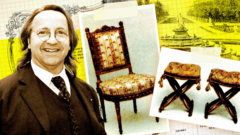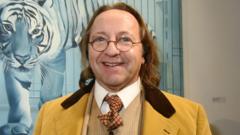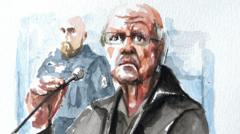Two renowned French antiques experts and a gallery have come under scrutiny for selling counterfeit chairs purportedly from the Palace of Versailles. The scandal raises questions about due diligence in the art market and the challenge of authenticating historical artifacts.
The Great French Furniture Fraud: How Experts Duped a Cultural Icon

The Great French Furniture Fraud: How Experts Duped a Cultural Icon
A scandal involving forged 18th-century chairs has sent ripples across the French antiques market and tarnished the reputation of esteemed experts and galleries.
In the early 2010s, two exquisite chairs, alleged to have once adorned the grounds of the Palace of Versailles, surfaced in the French antiques market. These chairs were believed to be among the most valuable items crafted for Marie Antoinette, the final queen of France's Ancien Régime, and bore the mark of Nicolas-Quinibert Foliot, a distinguished cabinetmaker from the 1700s. Recognized as "national treasures" by the French government in 2013, the palace expressed interest in acquiring them, but the asking price was deemed excessively high. Ultimately, the chairs were sold to Qatari Prince Mohammed bin Hamad Al Thani for an astonishing €2 million (£1.67 million).
The years leading up to the scandal saw a surge in 18th-century royal furniture appearing on the antiques market—items claimed to belong to notable figures like Madame du Barry and Princess Élisabeth, sister of King Louis XVI. Despite many of these antiques being purchased by Versailles for its museum collection, the truth unraveled in 2016 when it was exposed that all the chairs in question were actually forgeries.
Georges "Bill" Pallot, a respected figure in the antiques field, along with award-winning cabinetmaker Bruno Desnoues, faced trial for fraud and money laundering after a nine-year investigation. Significant accusations were also directed at Galerie Kraemer and its director, Laurent Kraemer, for alleged negligence in selling some of the counterfeit chairs, though both deny any wrongdoing.
The scheme, as revealed during the trial, began in 2007 when Pallot and Desnoues experimented with replicating a known armchair belonging to Madame du Barry. Their initial playful attempt spiraled into a series of fraudulent creations that they successfully passed off as authentic, with Pallot proudly claiming, "Everything was fake but the money." With profits estimated between €700,000 and €3 million deposited in overseas accounts, the fraudulent dealings came to light after the luxurious lifestyle of a middleman caught the attention of authorities.
Despite charges against some individuals being dropped, the trial exposed the need for stringent regulation within the art market. Prosecutors argued that both the gallery and its director failed to perform adequate due diligence in verifying the authenticity of the chairs sold to collectors, including major institutions like Versailles and Sotheby’s. Defense lawyers for Kraemer maintain that the gallery was a victim of the fraud and assert that their client had no notion of the true nature of the furniture being sold.
As the courtroom drama continues, this case starkly illustrates both the fragile nature of trust within the antiques market and the pressing necessity for enhanced oversight in the verification of cultural relics.
















